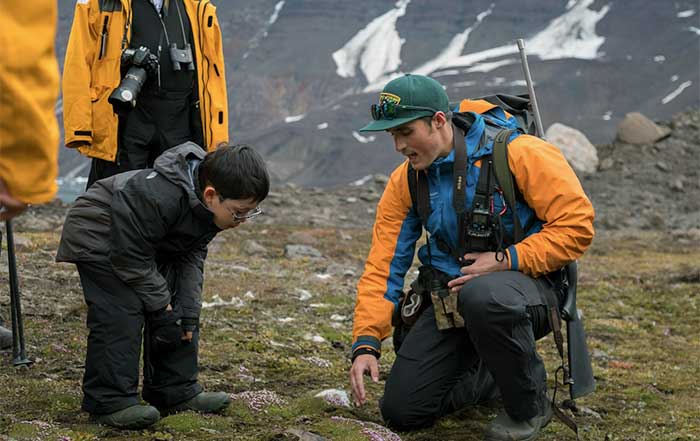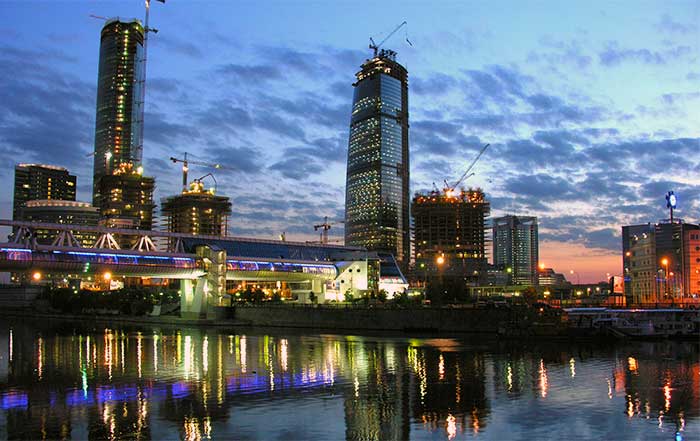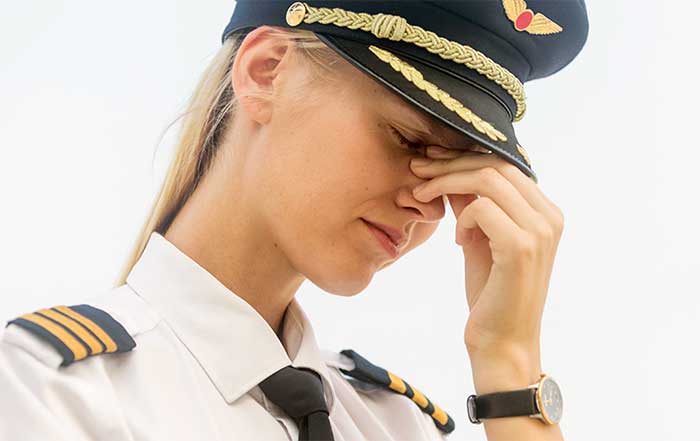Quark Expeditions, the global leader in polar adventures, has announced a summer deal for adventure-loving guests who dream of the ultimate family adventure in the Arctic. For a limited time (June 1 to September 20, 2023), kids, adolescents and teens travel free with their families on all Arctic 2023 voyages.
"Taking your children into the Arctic wilderness is one of the most educational and life-changing experiences you can provide your child," said Andrew White, President of Quark Expeditions. "I traveled to the Polar Regions with both of my children, when they were 14 and 15 years old, and the profound impact on them was astounding. Exploring the Arctic deepened their connection to nature and created family memories that we still talk about more than a decade later. As a parent, I look back at those Arctic moments as some of the most meaningful bonding experiences with my children. Their transformation was profound. So, what better way to celebrate the summer season than by announcing an offer that will enable guests to have the ultimate family adventure."
For a limited time (June 1 to September 20, 2023), kids, adolescents ad teens travel free with their families on all Arctic 2023 voyages to Greenland, the Canadian High Arctic and Spitsbergen. The deadline for this offer is June 30, 2023.
"The chance to sail down the historic Northwest Passage, visit Inuit communities to learn about their history and culture, and spot polar bears in the remote Canadian Arctic are the kinds of family experiences that create memories of a lifetime," said White. "Equally transformative are family adventures in Greenland, where guests and their children can go heli flightseeing over the Greenland Ice Sheet and camp overnight beside the 70-km long Tasermiut Fjord. And what child wouldn't love the chance to observe polar bears in the wilds of Spitsbergen!"
Quark Expeditions also offers a comprehensive educational program that's geared to guests of all ages.
About Quark Expeditions: Specializing exclusively in expeditions to Antarctica and the Arctic, Quark Expeditions® has been the leading innovator of polar adventure since the company took the first group of consumer travelers to the North Pole in 1991. Quark Expeditions has been innovating ever since. With a diverse fleet of specially-equipped small expedition vessels and icebreakers—some of them equipped with helicopters—Quark Expeditions delivers deeply immersive polar experiences—and is able to take guests deeper into the Polar Regions than anyone else. Led by passionate and seasoned expedition teams, including scientists, wildlife experts and researchers, Quark Expeditions offers an onboard program that enriches the passenger experience.
About Ultramarine:
The technologically-advanced Ultramarine, the newest addition to the Quark Expeditions fleet, is a game-changer in polar exploration. Equipped with two twin-engine Airbus 145 helicopters, 20 quick-launching Zodiacs and the largest portfolio of off-ship adventure options in the industry, Ultramarine changes the way guests explore the Polar Regions. Other features include a spa, sauna with floor-to-ceiling windows, fitness centre, yoga space, spacious rooms and two restaurants plus a lounge and presentation theatre. Ultramarine has been designed with advanced sustainability systems that help preserve the pristine Polar Regions for the next generation of explorers. Ultramarine has an Ice Class rating of 1A+ and Polar Class rating of PC6, which contribute to the vessel's superior standards of safety standard. The ship's innovative sustainability features, which help reduce its environmental footprint, include a micro auto gasification system (MAGS), which is capable of converting onboard waste into energy, eliminating the need for the transportation of waste.
About Travelopia: Travelopia is one of the world's leading specialist travel groups. A pioneer in the experiential travel sector with a portfolio consisting of more than 50 independently operated brands, most of which are leaders in their sector. From sailing adventures, safaris and sports tours, to Arctic expeditions, each brand is diverse and focused on creating unforgettable experiences for customers across the world.




